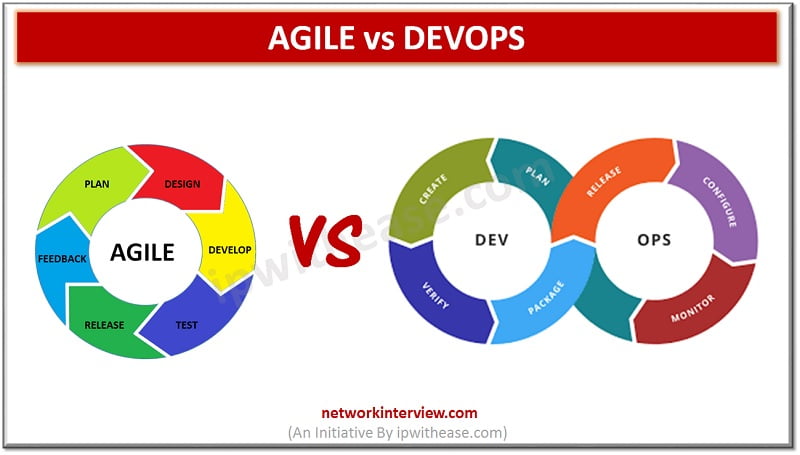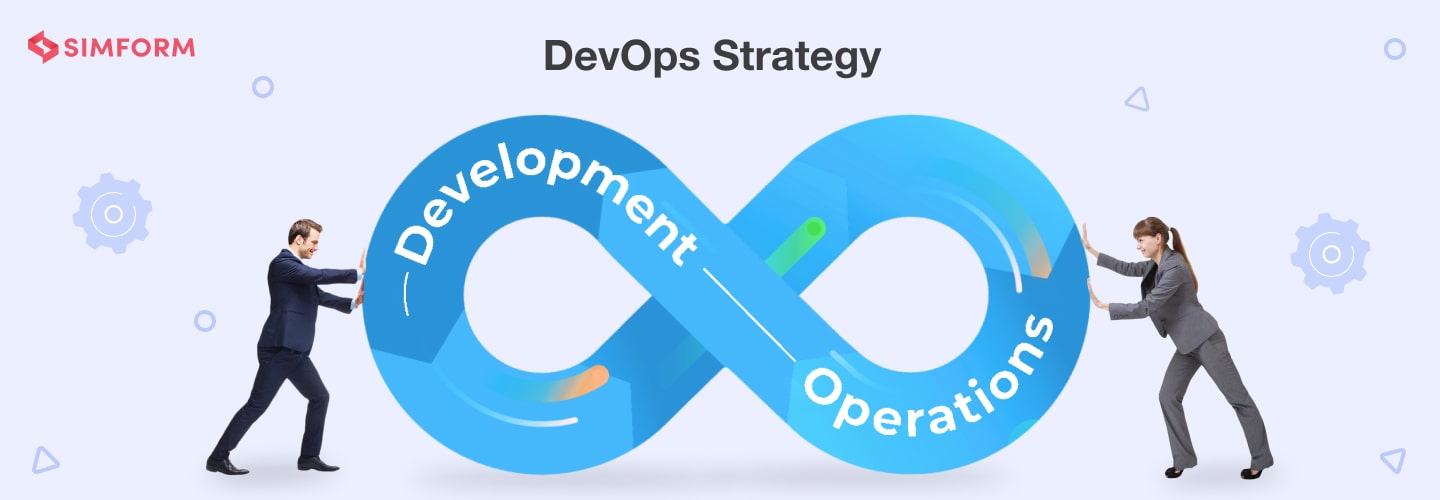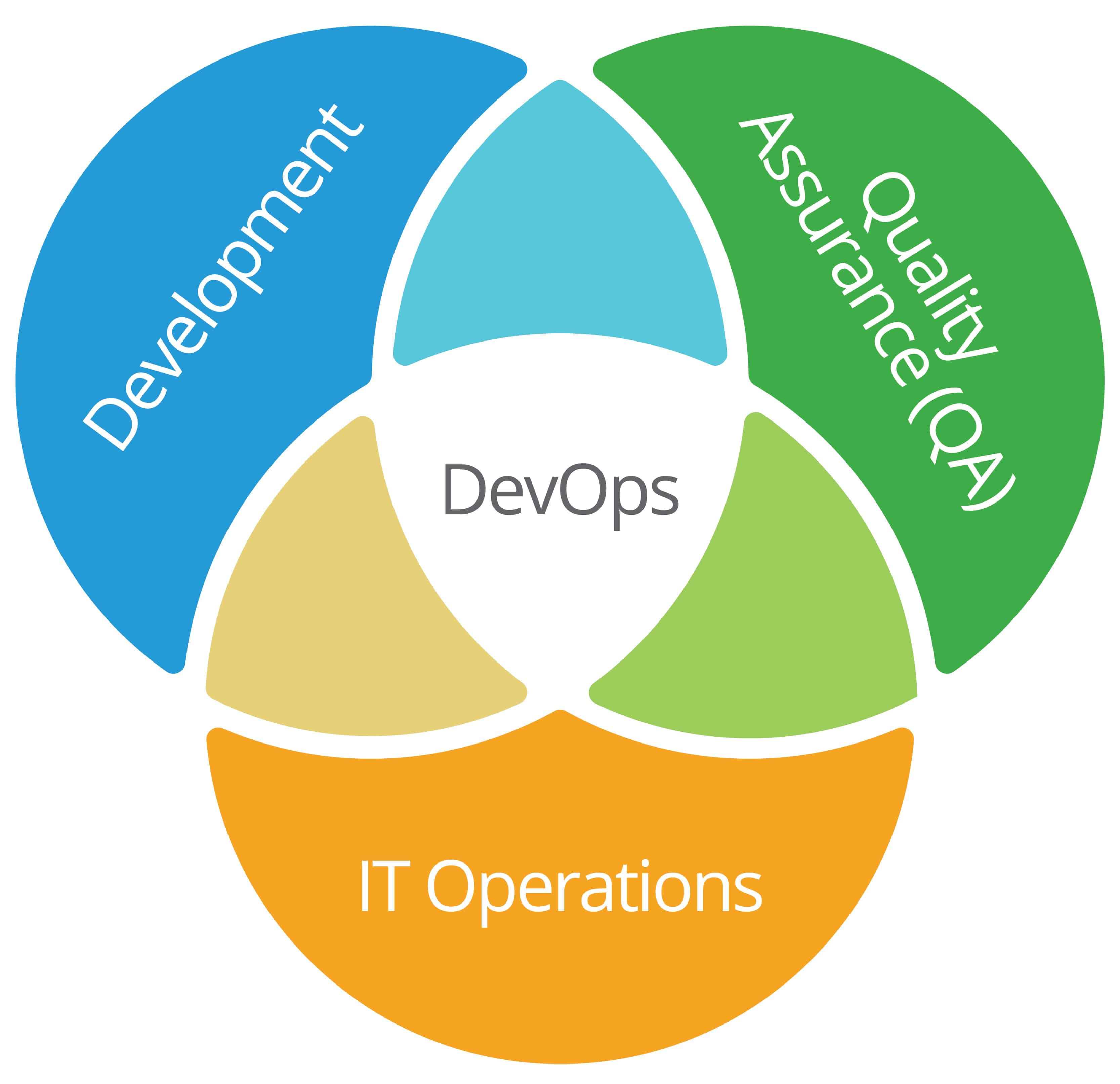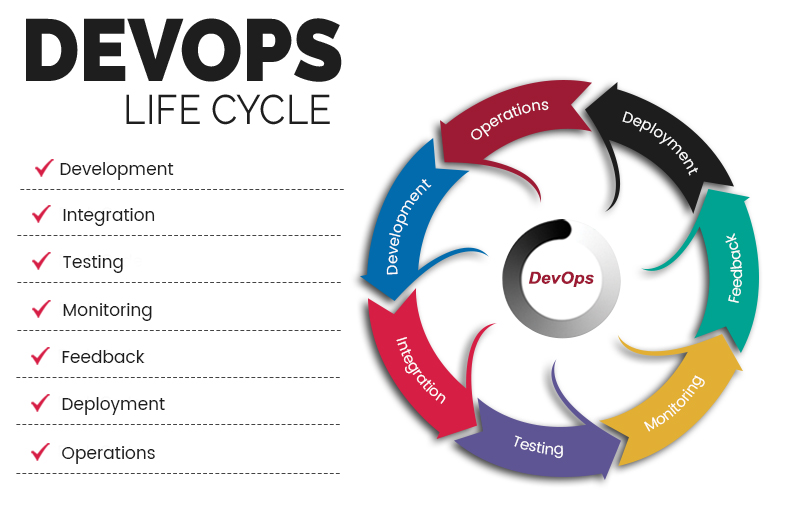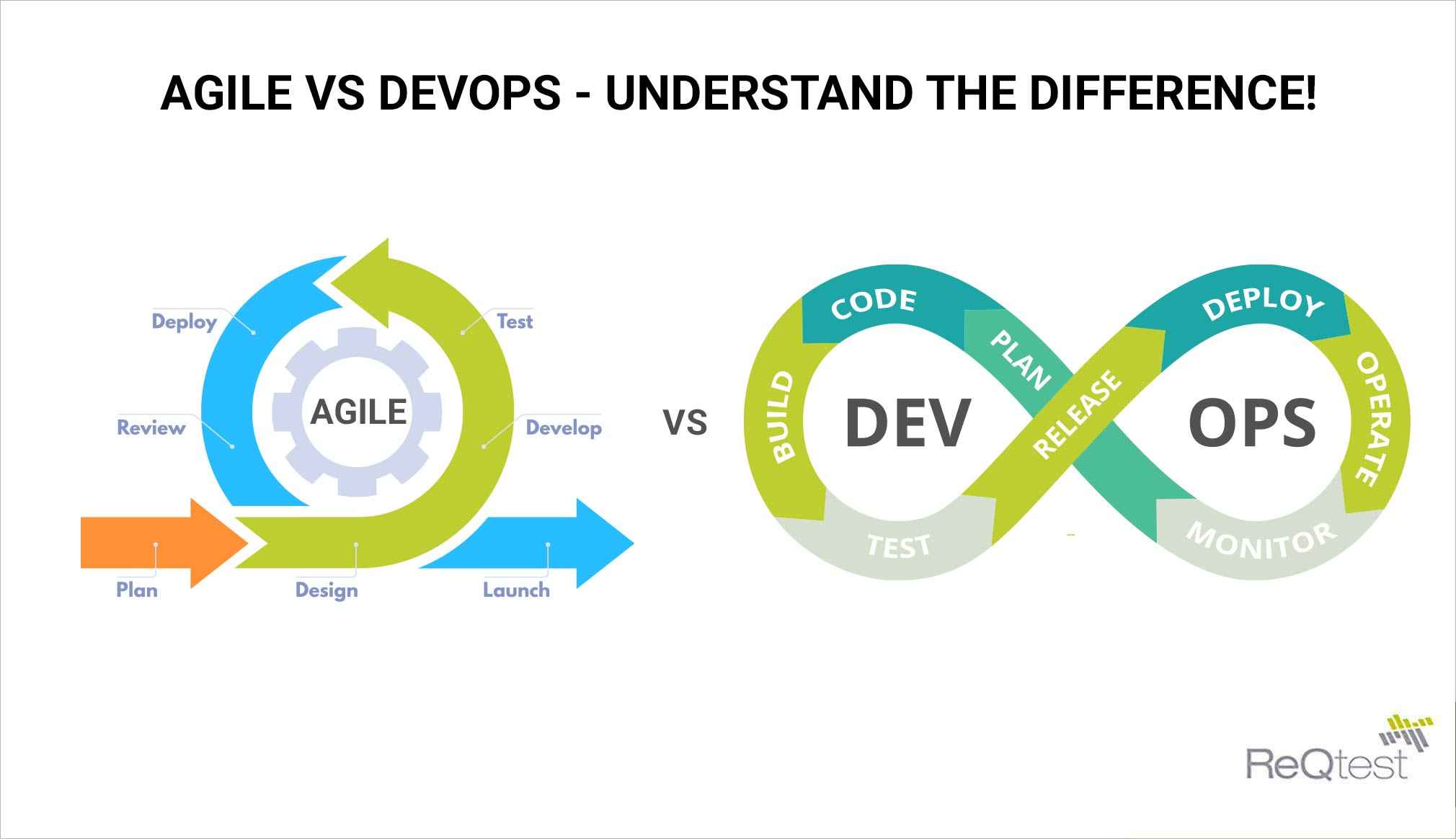Understanding DevOps and Agile Development
DevOps and Agile development are methodologies that, when combined, create a powerful framework for software development and deployment. Both approaches emphasize collaboration, continuous improvement, and the rapid delivery of high-quality software. DevOps focuses on bridging the gap between development and operations teams, while Agile development concentrates on iterative development and adaptive planning.
Both methodologies share common values, such as customer satisfaction, continuous feedback, and the importance of individuals and interactions. By integrating DevOps and Agile development, organizations can streamline their software development lifecycle, reduce time-to-market, and enhance collaboration between teams. This integration fosters a culture of shared responsibility, continuous learning, and rapid innovation, enabling businesses to stay competitive in the ever-evolving digital landscape.
The Synergy Between DevOps and Agile Development
DevOps and Agile development are two methodologies that, when combined, create a powerful and efficient software development framework. Both approaches focus on continuous integration, continuous delivery, and continuous improvement, which are essential for staying competitive in today’s fast-paced digital landscape.
Continuous Integration (CI) involves developers frequently merging their code changes into a central repository, where automated builds and tests are run. This practice helps identify and address integration issues early in the development process, ensuring that the software remains functional and stable. Continuous Delivery (CD) expands upon CI by automating the entire software release process, from build to deployment, enabling organizations to release software updates quickly and frequently.
Continuous Improvement is a mindset that encourages teams to regularly reflect on their processes, identify areas for improvement, and implement changes to enhance their overall performance. By incorporating continuous improvement into DevOps and Agile development, teams can foster a culture of learning, adaptation, and innovation, driving long-term success and growth.
By integrating DevOps and Agile development, organizations can reap numerous benefits, such as faster time-to-market, improved collaboration, enhanced product quality, and increased customer satisfaction. To successfully integrate these methodologies, it is crucial to establish cross-functional teams, promote a culture of collaboration, and adopt the right tools and technologies that support CI/CD and continuous improvement practices.
How to Successfully Implement DevOps and Agile Development
Implementing DevOps and Agile development in an organization requires careful planning, execution, and continuous improvement. To ensure a successful integration, consider the following steps:
- Establish Cross-Functional Teams: Create teams that consist of members from various disciplines, such as development, operations, quality assurance, and project management. Cross-functional teams promote better collaboration, shared responsibility, and faster problem-solving.
- Foster a Culture of Collaboration: Encourage open communication, trust, and transparency among team members. Implement regular meetings, workshops, and training sessions to help teams align their goals, share knowledge, and learn new skills.
- Adopt the Right Tools and Technologies: Utilize tools that support continuous integration, continuous delivery, and continuous improvement. Consider tools for version control, build automation, test automation, deployment automation, and performance monitoring.
- Define Clear Roles and Responsibilities: Clearly outline the roles and responsibilities of each team member to avoid confusion and ensure a smooth workflow. Encourage shared ownership and accountability for the success of the project.
- Create a Phased Implementation Plan: Break down the implementation process into smaller phases, allowing teams to gradually adopt DevOps and Agile practices. Start with a pilot project, gather feedback, and iteratively refine the approach based on the lessons learned.
- Monitor and Measure Performance: Regularly track and analyze key performance indicators (KPIs) to evaluate the success of the integration. Adjust the strategy as needed to optimize performance and continuously improve processes.
By following these steps, organizations can successfully implement DevOps and Agile development, reaping the benefits of faster time-to-market, improved collaboration, enhanced product quality, and increased customer satisfaction.
Real-World Examples of DevOps and Agile Development Integration
Numerous organizations have successfully integrated DevOps and Agile development, realizing significant improvements in their software development processes. Here, we will explore two real-world examples that demonstrate the power of combining these methodologies.
Example 1: Etsy
Etsy, the global online marketplace for unique and creative goods, is a well-known example of a company that has effectively integrated DevOps and Agile development. By adopting these methodologies, Etsy has been able to streamline its software development and deployment processes, reduce time-to-market, and enhance collaboration between teams.
Etsy’s strategy includes several key components, such as:
- Cross-functional teams: Etsy established cross-functional teams consisting of developers, operations, and quality assurance professionals.
- Automation: Etsy automated various processes, including build, test, and deployment, using tools like Chef and Jenkins.
- Monitoring: Etsy implemented comprehensive monitoring using tools like Nagios and Graphite to track performance and identify issues quickly.
- Culture: Etsy fostered a culture of collaboration, learning, and experimentation, encouraging teams to continuously improve their processes.
Example 2: Netflix
Netflix, the world’s leading streaming entertainment service, has also successfully integrated DevOps and Agile development. By combining these methodologies, Netflix has been able to create a robust, scalable, and flexible platform capable of handling millions of concurrent users.
Netflix’s approach includes the following elements:
- Microservices: Netflix adopted a microservices architecture, allowing teams to develop, deploy, and scale services independently.
- Automation: Netflix automated various processes, including testing, deployment, and scaling, using tools like Spinnaker and Titus.
- Chaos Engineering: Netflix implemented Chaos Engineering practices, intentionally introducing failures to test the resilience and reliability of its platform.
- Culture: Netflix fostered a culture of innovation, learning, and accountability, empowering teams to take ownership of their services and continuously improve them.
These real-world examples demonstrate the significant benefits that organizations can achieve by integrating DevOps and Agile development. By adopting the strategies and best practices of these successful companies, other businesses can improve their software development processes, reduce time-to-market, and enhance collaboration between teams.
Best Practices for DevOps and Agile Development Collaboration
To ensure seamless collaboration between DevOps and Agile development teams, it is essential to follow best practices that promote communication, shared goals, and the use of visual management tools. Here are some recommendations for fostering a successful partnership between these two methodologies:
1. Establish Clear Communication Channels
Effective communication is crucial for successful collaboration. Encourage regular meetings, stand-ups, and workshops between DevOps and Agile development teams to discuss progress, challenges, and opportunities. Utilize collaboration tools like Slack, Microsoft Teams, or Google Workspace to facilitate communication and keep everyone informed.
2. Align Goals and Priorities
Ensure that both DevOps and Agile development teams share common goals and priorities. This alignment can be achieved by involving both teams in the planning and decision-making processes. By working together to define shared objectives, teams can better understand how their efforts contribute to the overall success of the project.
3. Implement Visual Management Tools
Visual management tools, such as Kanban boards or Agile project management software, can help teams track progress, identify bottlenecks, and manage workflow. These tools provide a clear overview of the project’s status, enabling teams to collaborate more effectively and make data-driven decisions.
4. Foster a Culture of Continuous Learning
Encourage a culture of continuous learning and improvement within both DevOps and Agile development teams. Provide opportunities for team members to attend workshops, conferences, and training sessions to stay up-to-date with the latest tools, technologies, and best practices. This approach will help teams maintain a high level of expertise and adapt to changing requirements more efficiently.
5. Promote Cross-Functional Collaboration
Encourage cross-functional collaboration by creating opportunities for team members to work on tasks outside their primary area of expertise. This practice can help break down silos, build empathy, and foster a deeper understanding of the challenges and opportunities faced by both DevOps and Agile development teams.
6. Measure and Monitor Performance
Regularly track and analyze key performance indicators (KPIs) to evaluate the success of the DevOps and Agile development integration. KPIs such as lead time, deployment frequency, and mean time to recovery can provide valuable insights into the efficiency and effectiveness of the collaboration. Utilize this data to identify areas for improvement and implement changes to optimize performance.
By following these best practices, organizations can ensure seamless collaboration between DevOps and Agile development teams, ultimately leading to improved software development processes, reduced time-to-market, and enhanced collaboration between development and operations teams.
Measuring the Impact of DevOps and Agile Development Integration
To assess the success of a DevOps and Agile development integration, it is essential to monitor key performance indicators (KPIs) that provide insights into the efficiency and effectiveness of the software development and deployment processes. Here are some KPIs that organizations should consider when measuring the impact of their DevOps and Agile development integration:
1. Lead Time
Lead time refers to the time it takes for a feature or bug fix to go from the initial request to production. By measuring lead time, organizations can evaluate their ability to quickly respond to customer needs and market changes.
2. Deployment Frequency
Deployment frequency measures how often new releases are deployed to production. Increased deployment frequency is a sign of a mature DevOps and Agile development integration, as it indicates the organization’s ability to deliver value to customers more rapidly.
3. Mean Time to Recovery (MTTR)
MTTR measures the average time it takes to recover from a failure or incident. A shorter MTTR indicates a more resilient system and a more efficient incident response process.
4. Change Failure Rate
Change failure rate represents the percentage of changes that result in a failure or incident. A lower change failure rate indicates a more stable and reliable system.
5. Code Quality Metrics
Code quality metrics, such as code coverage, code complexity, and technical debt, can provide insights into the maintainability and scalability of the system. By monitoring these metrics, organizations can ensure that their software development practices adhere to high-quality standards.
6. Team Velocity
Team velocity measures the amount of work a team can complete in a given time period, such as a sprint. By tracking team velocity, organizations can evaluate their progress and identify opportunities for improvement.
By monitoring these KPIs, organizations can measure the success of their DevOps and Agile development integration and identify areas for improvement. Regularly reviewing these metrics can help teams optimize their processes, reduce time-to-market, and enhance collaboration between development and operations teams.
Overcoming Challenges in DevOps and Agile Development Integration
Integrating DevOps and Agile development can present several challenges for organizations. However, with the right strategies and solutions, these challenges can be addressed effectively. Here are some common obstacles and ways to overcome them:
1. Resistance to Change
Resistance to change is a common challenge when implementing new methodologies. To address this issue, organizations should involve all stakeholders in the decision-making process, provide clear communication about the benefits of the integration, and offer training and support to help teams adapt to the new way of working.
2. Skill Gaps
DevOps and Agile development require specialized skills, such as automation, cloud computing, and collaboration. To address skill gaps, organizations should invest in training and development programs, hire experts to mentor teams, and create opportunities for team members to learn and grow.
3. Tool Compatibility Issues
Integrating DevOps and Agile development may require adopting new tools and technologies. To ensure tool compatibility, organizations should conduct thorough research, involve teams in the selection process, and provide training on the new tools.
4. Lack of Executive Support
Without executive support, integrating DevOps and Agile development can be challenging. To secure executive buy-in, organizations should present a clear business case, demonstrate the benefits of the integration, and involve executives in the decision-making process.
5. Siloed Teams
Silos between development and operations teams can hinder collaboration and communication. To break down silos, organizations should establish cross-functional teams, promote a culture of collaboration, and provide opportunities for team members to work together on shared goals.
By addressing these challenges, organizations can successfully integrate DevOps and Agile development, streamline software development and deployment processes, reduce time-to-market, and enhance collaboration between development and operations teams.
The Future of DevOps and Agile Development Integration
As DevOps and Agile development continue to evolve, organizations can expect new trends and opportunities to emerge in their integration. Here are some key areas to watch:
1. Artificial Intelligence (AI) and Machine Learning (ML)
AI and ML can help automate and optimize various aspects of software development and deployment, such as code analysis, testing, and incident response. By integrating AI and ML into their DevOps and Agile development processes, organizations can improve efficiency, reduce errors, and enhance collaboration between teams.
2. Value Stream Management
Value stream management involves visualizing, managing, and optimizing the entire software development lifecycle, from ideation to deployment. By adopting value stream management practices, organizations can gain end-to-end visibility into their DevOps and Agile development processes, identify bottlenecks and inefficiencies, and make data-driven decisions to improve their performance.
3. Infrastructure as Code (IaC)
IaC involves managing and provisioning infrastructure through code, enabling teams to automate and standardize their infrastructure management processes. By adopting IaC practices, organizations can reduce errors, improve consistency, and accelerate the deployment of new features and applications.
4. Cloud-Native Architectures
Cloud-native architectures, such as microservices and containerization, enable organizations to build and deploy applications more efficiently and flexibly. By adopting cloud-native architectures, organizations can improve scalability, reduce time-to-market, and enhance collaboration between development and operations teams.
5. Security as a First-Class Citizen
As DevOps and Agile development continue to prioritize speed and efficiency, security must be integrated into the development lifecycle from the beginning. By adopting a security-first mindset, organizations can reduce the risk of breaches and vulnerabilities, improve compliance, and build trust with their customers.
By staying up-to-date with these trends and opportunities, organizations can continue to optimize their DevOps and Agile development integration, improve their software development and deployment processes, and stay competitive in the ever-evolving digital landscape.


